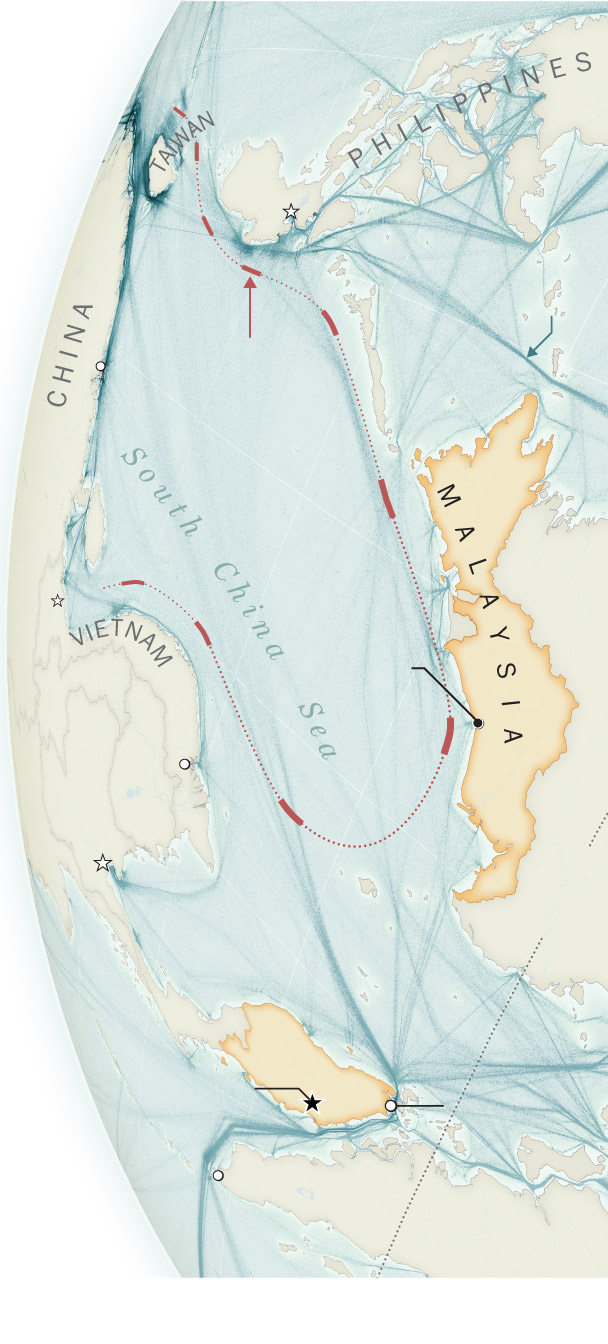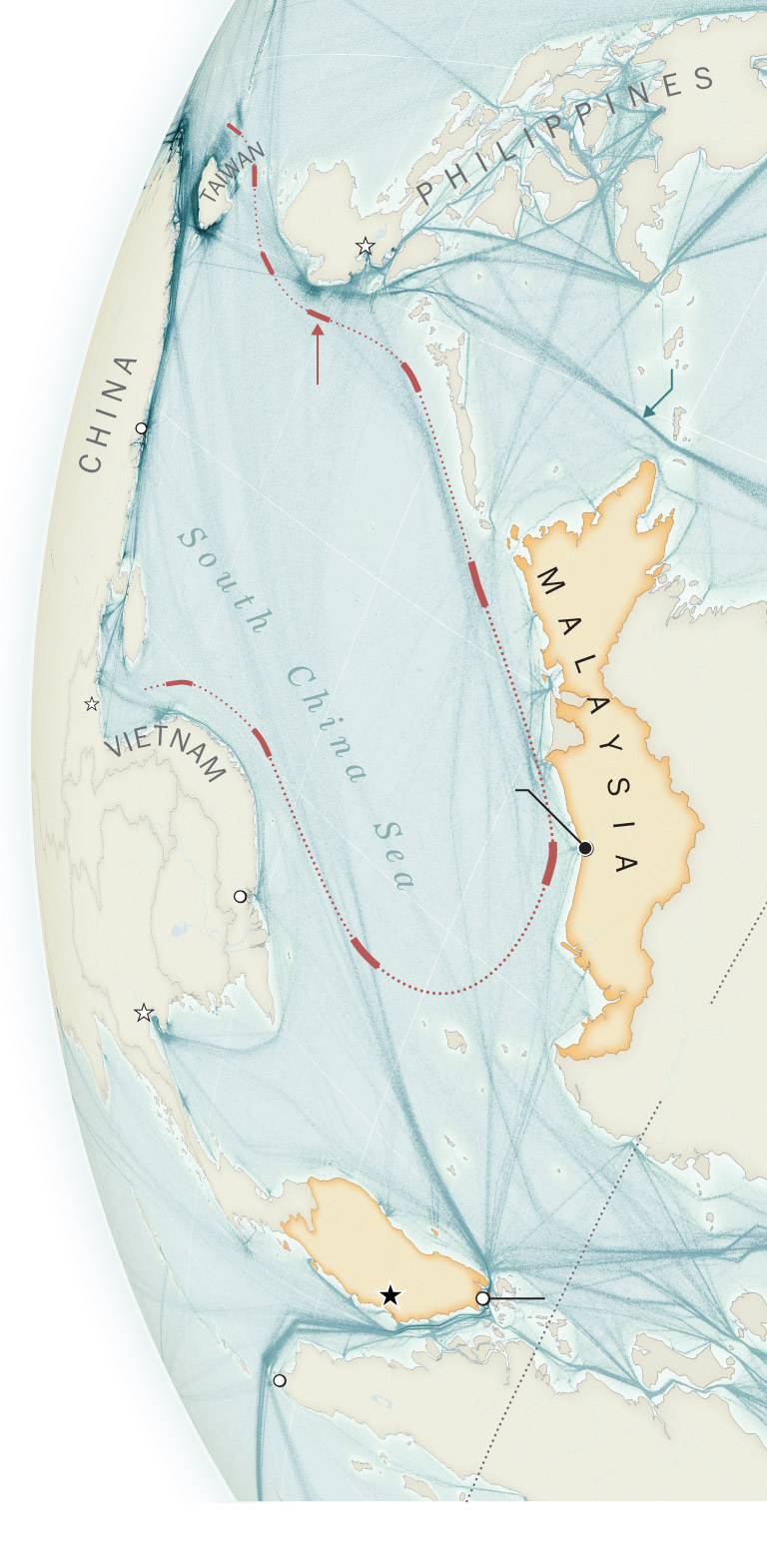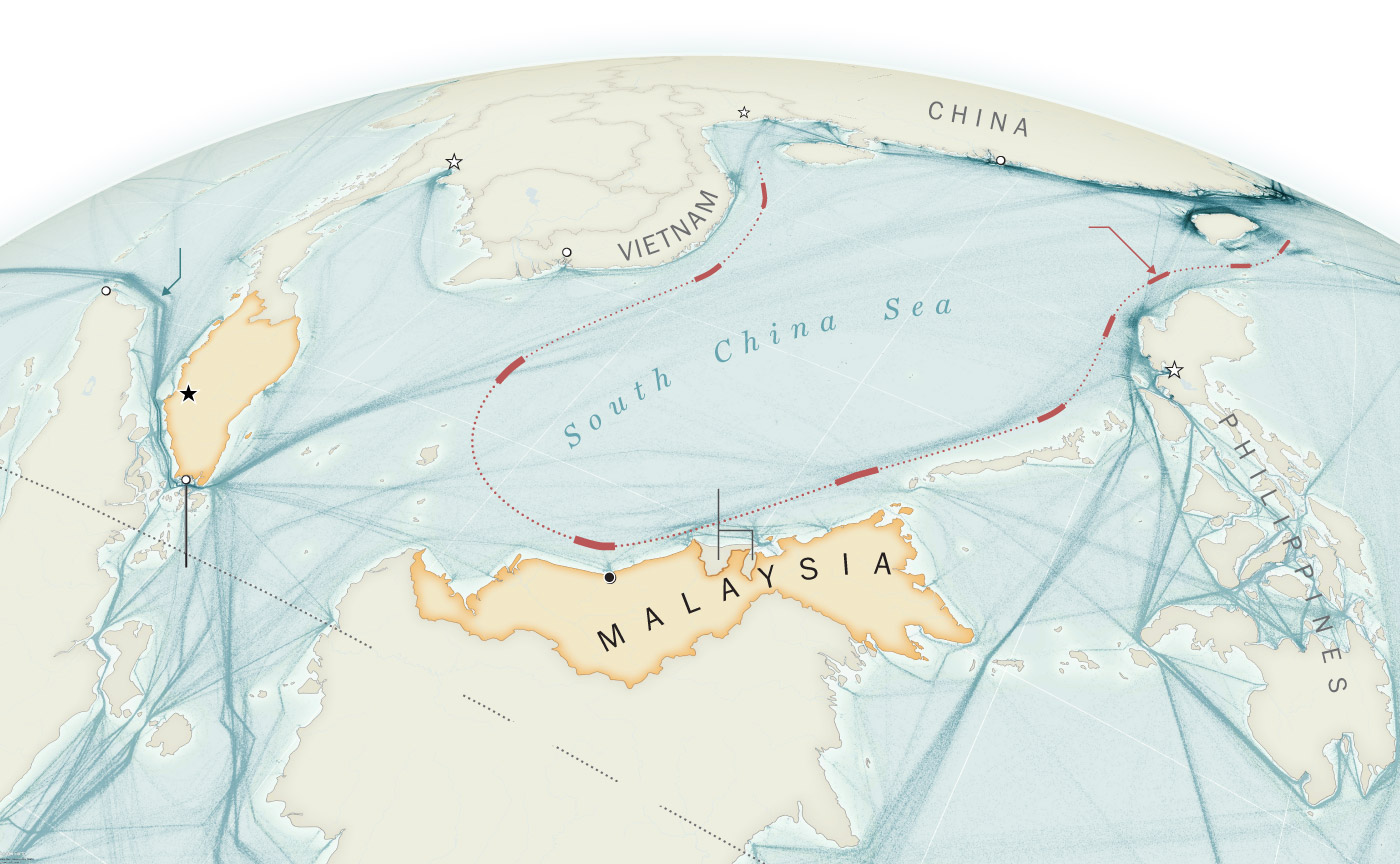In South China Sea, Malaysia risks confronting China over oil and gas
But Malaysia is running out of oil and gas close to shore. Increasingly, it has to venture farther out to sea, raising the likelihood of direct confrontation with Chinese forces in the South China Sea.
As tensions rise throughout the South China Sea, one of the world’s busiest and most contested bodies of water, energy demands are drawing Malaysia deeper into the fray and testing the country’s long-standing reluctance to antagonize China, according to interviews with more than two dozen government officials, diplomats, oil and gas executives and analysts in Malaysia.
Some of Asia’s biggest oil and gas reserves lie under the seabed of these disputed waters, according to the U.S. Energy Information Administration. Since 2021, Malaysia’s state-owned energy company, Petronas, has awarded several dozen new permits for companies like Shell and TotalEnergies to explore new deposits here, many in so-called “deepwater” clusters more than 100 nautical miles from shore but still within the boundaries of what Malaysia considers its exclusive economic zone (EEZ).
These developments are teeing up more confrontations with China, warn energy and security analysts. Already, federal and provincial officials in Malaysia have been beefing up military deployments around the industrial port town of Bintulu in the state of Sarawak, where much of the country’s oil and gas industry is based, and Malaysia has been increasing military cooperation with the United States, particularly on maritime security. For the first time later this year, a bilateral army exercise that Malaysia conducts annually with the United States will be held on Borneo, said a U.S. State Department official.

China’s
maritime
claims
Scale varies in this perspective; Distance from Bintulu
to Singapore is 650 miles. Ship routes via World Bank.

China’s
maritime
claims
Scale varies in this perspective; Distance from Bintulu to Singapore
is approximately 650 miles. Shipping routes source via World Bank.

China’s maritime claims
Shipping routes
source: World Bank
Scale varies in this perspective; Distance from
Singapore to Bintulu is approximately 650 miles.

China’s maritime
claims
Shipping routes
source: World Bank
Scale varies in this perspective; Distance from
Singapore to Bintulu is approximately 650 miles.
At least since 2020, China has been harassing Malaysian drilling rigs and survey vessels, leading to standoffs that have lasted months, according to satellite imagery and data that track ship movements. For years, Malaysia’s response has been muted — a calculation shaped by reliance on Chinese investment and the relative weakness of the Malaysian military, said Malaysian security analysts and defense officials. Unlike the Philippines or Vietnam, Malaysia rarely publicizes Chinese intrusions into its EEZ, which extends 200 nautical miles off the coast, and withholds how often these incidents occur from journalists and academics.
In an exclusive interview, the director general of Malaysia’s National Security Council dismissed concerns of Chinese harassment even as he acknowledged that Chinese vessels had been patrolling Malaysian waters nearly nonstop.
“Obviously, we prefer for Chinese assets not to be in our waters,” said Nushirwan bin Zainal Abidin, who was ambassador to China from 2019 to 2023. But there’s no need, he added, for the dispute to “color” Malaysia’s broader relationship with its largest trading partner. “We can let sleeping dogs lie,” Nurshirwan said.
Despite objections from countries in Southeast Asia, China has laid claim to almost the entire South China Sea, building artificial islands and deploying vessels to enforce what it calls the “10-dash line,” delimiting on maps the boundaries of what China says are its waters, which come within 30 nautical miles of the Malaysian coast.
While much attention in recent months has been paid to China’s…
Read More: In South China Sea, Malaysia risks confronting China over oil and gas

